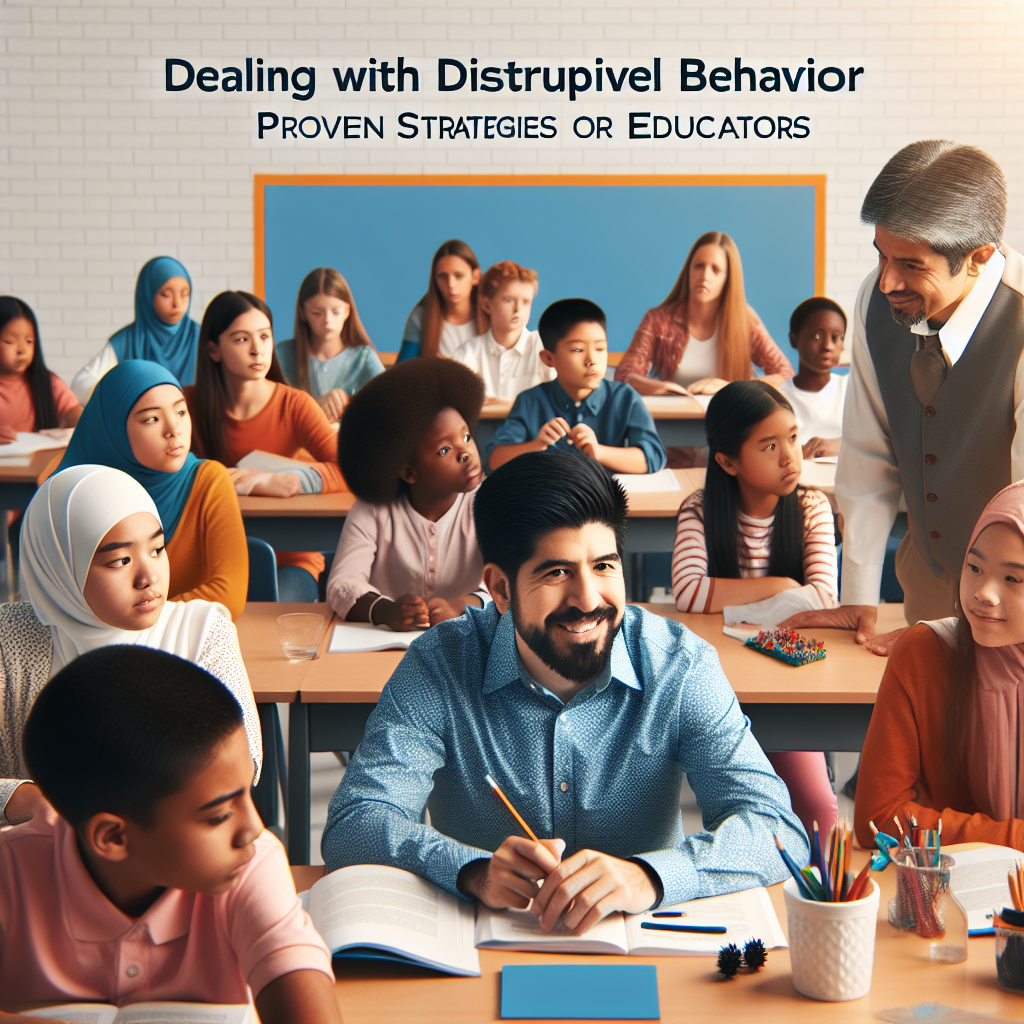Introduction
Every educator knows that a classroom is not merely a space filled with desks and chairs; it’s a vibrant ecosystem of diverse personalities and learning styles. However, with this diversity often comes the challenge of disruptive behavior. Dealing with disruptive behavior: proven strategies for educators are essential not just for preserving classroom harmony but also for fostering an environment conducive to learning. This article delves into effective strategies that educators can employ, case studies that demonstrate these strategies in action, and offers actionable insights that can transform even the most chaotic classroom into a thriving community of learners.
Understanding Disruption in the Classroom
The Nature of Disruptive Behavior
Disruptive behavior can manifest in various forms—from talking out of turn and making noise to more severe acts like bullying or defiance. Understanding the roots of disruptive behavior is crucial. Factors may include:
- Emotional Issues: Anxiety, depression, or trauma.
- Learning Disabilities: Undiagnosed ADHD or other conditions can cause frustration.
- Home Environment: Stressors at home can lead to distractions in school.
Creating a supportive environment begins with understanding these influences.
Case Study: Reactive vs. Proactive Management
In a suburban middle school, a teacher faced chronic disruption from a group of students who would frequently interrupt lessons with jokes and side conversations. Initially, the teacher utilized a reactive approach—correcting them each time. However, after attending a workshop on classroom management, the teacher shifted to a proactive strategy by establishing clear guidelines and engaging students in developing classroom norms. This shift resulted in decreased disruptive behavior and enhanced student engagement.
Proven Strategies for Addressing Disruption
1. Establish Clear Expectations
Setting clear behavioral expectations from the start is paramount. Students thrive on structure, and knowing what is acceptable behavior helps minimize disruptions. Educators should:
- Create a Classroom Contract: Collaboratively develop rules with students to foster ownership.
- Consistently Reinforce Norms: Remind students of the contracted rules regularly.
2. Implement Restorative Practices
Restorative practices focus on repairing relationships rather than merely punishing misbehavior. This technique encourages students to reflect on their actions and understand their impact on others.
Example: Restorative Circles
In a high school setting, a teacher faced a bullying incident. Instead of traditional disciplinary action, he employed a restorative circle, bringing together the victim, the aggressor, and witnesses. This facilitated an open dialogue, resulting in an acknowledgment of harm and a commitment to change.
3. Foster Relationships
Building strong relationships with students can be a powerful deterrent to disruptive behavior. When students feel valued, they are less likely to act out.
- One-on-One Check-ins: Regular informal conversations can help educators gauge student feelings.
- Recognition of Accomplishments: Celebrating both large and small successes can enhance students’ self-worth.
4. Adapt Teaching Strategies
Sometimes, disruptions arise from a mismatch between teaching and learning styles. Incorporating various methods can cater to different preferences.
- Interactive Learning: Engage students through group work and hands-on activities to maintain interest.
- Differentiation: Tailor lessons to accommodate diverse learners, potentially reducing behavioral issues.
5. Incorporate Positive Reinforcement
Positive reinforcement encourages good behavior by acknowledging and rewarding it, creating a positive feedback loop.
Chart: Types of Reinforcement
| Type of Reinforcement | Description |
|---|---|
| Verbal Praise | Direct positive feedback for behavior |
| Token Economy | Reward systems for achieving good behavior |
| Peer Recognition | Allowing students to commend each other |
In a classroom where positive reinforcement was actively applied, disruptive behavior significantly decreased, and overall student morale improved.
Creating a Classroom Culture that Reduces Disruptive Behavior
1. Promote Inclusivity
An inclusive classroom where every student feels they belong is less likely to experience disruption. Educators should:
- Encourage Diversity: Celebrate cultural and individual differences within the classroom.
- Use Culturally Relevant Teaching: Integrate students’ backgrounds into the curriculum to foster a sense of belonging.
2. Engage Parents and Guardians
Maintaining strong communication with parents can provide insights into students’ behaviors and reinforce expectations at home.
- Regular Updates: Use newsletters or apps to keep parents informed.
- Parent Meetings: Host events where parents can learn about classroom expectations and strategies.
3. Utilize Technology Wisely
Technology can be double-edged. While it can engage students, it can also lead to distraction. Implementing structured technology use can mitigate this.
4. Professional Development
Continuous learning for educators is essential. Schools should provide training in classroom management techniques and emotional learning.
Case Study: Training Impact
At a rural elementary school, teachers participated in a professional development program focused on socio-emotional learning. The impact was remarkable, as classroom disruptions decreased by 30% within the following semester.
Conclusion
Dealing with disruptive behavior: proven strategies for educators is an ongoing journey that requires patience, creativity, and a deep understanding of student needs. By establishing clear expectations, fostering strong relationships, and utilizing proactive strategies, educators can create a supportive and engaging learning environment. Rather than reacting to disruptions, this approach encourages empowerment and inclusivity, paving the way for student success.
FAQs
1. What are the early signs of disruptive behavior?
- Early signs may include talking back, off-task behavior, and reluctance to participate.
2. How can I address disruptions without alienating students?
- Employ restorative practices and maintain open communication to ensure students feel heard and respected.
3. Is it helpful to involve the whole class in setting behavior norms?
- Yes! When students help create rules, they are more likely to comply with them.
4. What role does emotional intelligence play in managing disruptive behavior?
- High emotional intelligence allows educators to navigate classroom dynamics effectively, fostering a more harmonious environment.
5. How can I maintain my authority while being approachable?
- Set clear boundaries while also showing empathy and understanding towards students’ challenges.
By implementing these proven strategies, educators can move forward with confidence in their ability to manage disruptive behavior effectively, ensuring that every student has the opportunity to learn in a positive and supportive environment.

